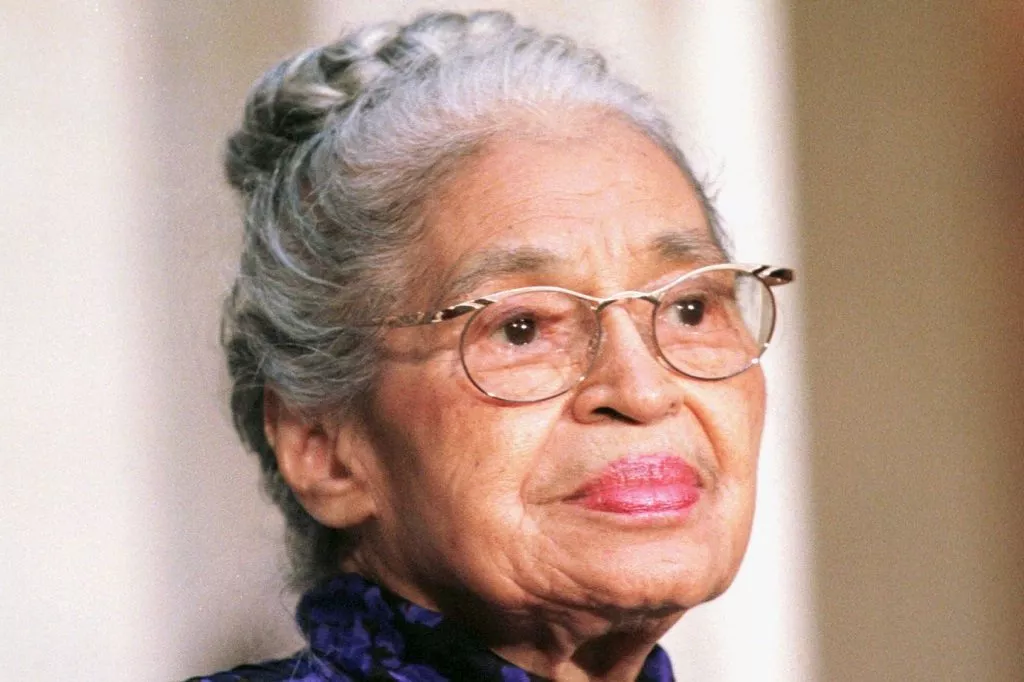Quick Facts
| Net Worth | Not Known |
| Salary | Not Known |
| Height | Not Known |
| Date of Birth | Not Known |
| Profession | Politicians |
Increasingly, the world is attributing a healthy dose of respect for women who are not afraid to fight for a course they believe in especially if it is a noble one. Rosa Parks was one of such women, an African-American woman who by sitting down, stood up for the right of the entire black race in America.
Today, Rosa is recognized as the mother of the modern-day civil rights movement in all of America and the world beyond. Her refusal to give up a seat she paid for to a white male passenger in 1955 triggered a strong protest that shook the United States and changed America’s view of colored people and also redirected the course of history
Rosa Parks Biography
Rosa Louise Parks popularly known as Rosa Parks was born on the 4th day of February 1913 in Tuskegee, Alabama. She was born as Rosa Louise McCauley but changed her name to Rosa parks when she got married to a man called Raymond Parks, a barber from Montgomery in 1932. Rosa’s mother Leona Edwards McCauley worked as a teacher while her dad James McCauley was a carpenter.
It is on record that Rosa attended local rural schools and after she turned 11 years old, she proceeded to the industrial school for girls in Montgomery and later to Alabama State Teacher’s College High School. But unfortunately for her, she had to drop out of school in order to take care of her sick grandmother and eventually her own mother became sick also and Rosa had to give up any hope of completing the teacher’s training she was receiving.
Rosa Parks gradually became conscious of the segregation which was deeply embedded in her hometown Alabama. As a growing child, the human right activist experienced deep-rooted racism and it occurred to her young mind that the blacks and whites faced different opportunities in life.
She was encouraged by her husband Raymond Parks to earn her high school degree in 1933 and later, she joined the Montgomery chapter of the NAACP (National Association for the Advancement of Colored People) and became actively involved in civil rights issues in 1943. During her time with NAACP, she served as the youth leader of her chapter and later as the secretary to the president of NAACP. The human right activist eventually became deeply involved in fundraising and other initiatives concerning the chapter. She was always attending meetings, seeking to prevent injustice and protecting the rights of colored people.
Rosa’s action in a bus sparked off the Montgomery famous bus boycott in 1955 when she refused to give her seat to a white man. Her actions lead to her arrest and trial where she was found guilty of an act of civil disobedience and consequently paid a fine but the bus boycott that followed this event changed the segregation laws in Montgomery as well as the life of the colored people.
After the successful boycott which lasted for 381 days, Rosa became an icon, she became a known figure and a leading spokesperson in matters of civil rights in the US. Although she lost her job in the departmental store and had to survive working as a seamstress for years, she wasn’t discouraged but kept up the fight against racism.
Rosa would later be employed by the African American U.S rep John Conyers and until her retirement in 1965, she worked as his secretary.
When and How Did She Die? Here are the Facts
The human right activist died on the 24th day of October 2005 in her apartment in Detroit, Michigan. In 2004, Rosa was diagnosed with progressive dementia which seems to have been there since 2002.
It is known that Rosa died at the age of 92 in her home while reading the newspapers between 7 to 8 pm. The cause of death was recorded as natural causes.
Rosa’s burial was a phenomenal one which was marked by several memorial services: her body was laid in state at the Capitol Rotunda Washington, D.C and it is on record that more than 50,000 people from all walks of life came to see her casket.
She was buried at Detroit’s Woodlawn Cemetery, in the chapel’s mausoleum and her final resting place was between her mother and her husband’s graves. Not long after her burial, the chapel’s name changed to Rosa L. Parks Freedom Chapel; this was done in a bid to immortalize her name.
Top 3 Richest Politicians
Also Read: Top 10 Richest People in the world with full biography and details.




